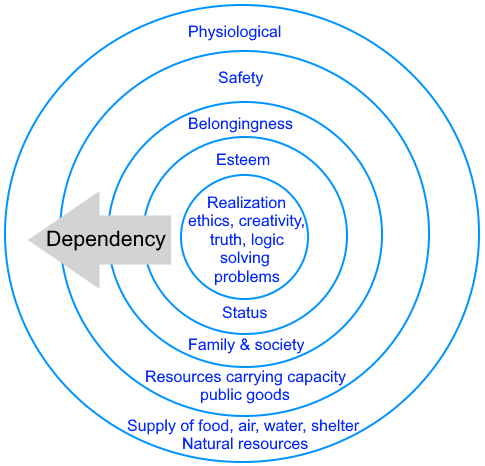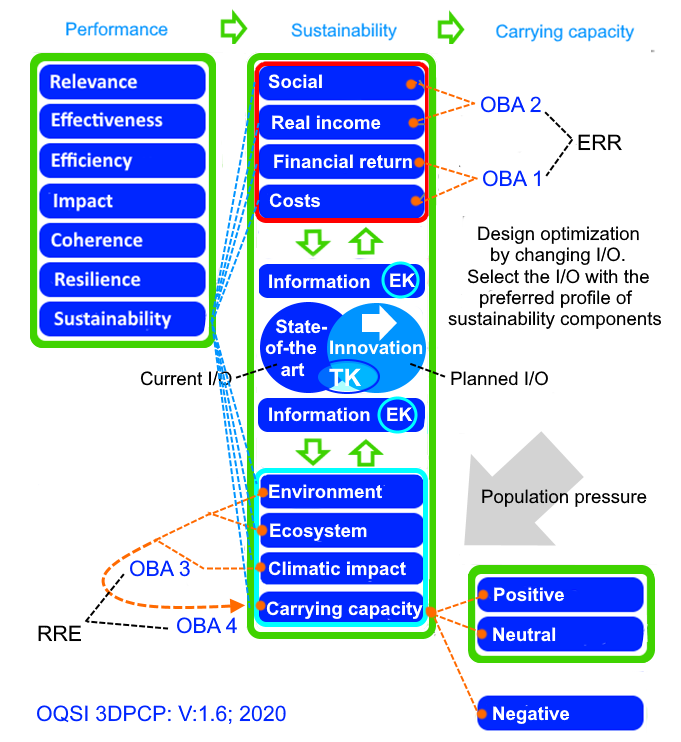Terminating the assault on humanity
Hector McNeill1
SEEL
 The assault on humanity can be identified in the impact of economic policies stated to be beneficial to prosperity ending up with an increasing proportion of the population gravitating towards pauperism, disparity and conditions giving rise to social conflict. Clearly, the evidence points to policy decision making being based on models that are incapable of accounting for the needs of the constituents of the United Kingdom. The assault on humanity can be identified in the impact of economic policies stated to be beneficial to prosperity ending up with an increasing proportion of the population gravitating towards pauperism, disparity and conditions giving rise to social conflict. Clearly, the evidence points to policy decision making being based on models that are incapable of accounting for the needs of the constituents of the United Kingdom.
The different types of human need were elaborated by Abraham Maslow (1908-1970), in his works, “Motivation and Personality” (1954) and “Toward a Psychology of Being” (1962). Although, probably not on the priority reading lists of most economists, Maslow's work was reviewed in some depth in the late 1980s at the Information Technology & Telecommunications Task Force preparatory work in the identification of appropriate future applications for information technology and digital intelligence, also referred to as 5th Generation systems. The outcome of that work emphasized the importance of ensuring that all levels of needs were accounted for in taking any decisions on economic development policies based on technology development.
These priorities found their way into Decision Analysis Brief (DAB) specifications and which, to this day are not applied by governments, economists or business. As a result, rather that see the economic system solving human problems, it has become increasingly the principal drivers of an assault on humanity.
|
 Abraham Maslow Abraham Maslow
1908-1970 |
IntroductionAbraham Maslow
2 (1908-1970), in his works, “Motivation and Personality” (1954) and “Toward a Psychology of Being” (1962), stated that each person faces a series of needs to be satisfied, ranging from basic physiological requirements to love, esteem, and self-actualization. As each need is satisfied, the next level of needs becomes more significant in an emotional motivational hierarchy that sets out dominant motivations. The hierarchy of needs is often represented as a hierarchical pyramid with five levels. The four levels (lower-order needs) are considered physiological needs, while the top level of the pyramid is considered growth needs. The lower level needs must be satisfied before higher-order needs can influence behaviour.
The levels are as follows:
- TOP
- Self-actualization – includes morality, creativity, problem solving, etc.
- Esteem – includes confidence, self-esteem, achievement, respect, etc.
- Belongingness – includes love, friendship, intimacy, family, etc.
- Safety – includes security of environment, employment, resources, health, property, etc.
- Physiological – includes air, food, water, sex, sleep, other factors towards homeostasis, etc.
- BOTTOM
Dependencies and the ability to satisfy needsThe ability to satisfy needs is not a purely psychological issue but rather depends upon the human physical environment, in the end it depends upon the availability of sufficient natural resources. The more significant interpretation of the hierarchy, in the context of economics, is to consider it to be a statement of dependencies in that if the lower level resources that support the satisfaction of needs are not stable and/or are being depleted, then neither can be the higher levels sustain the satisfaction of needs. Therefore, it is productive to imagine the needs and dependencies to be located in concentric bands surrounding society and eventually, each person as illustrated below.
Resource dependencies to support human needs

Source: Adapted from several versions of the Maslow hierarchical needs pyramid. |
The titles of classes of Maslow's needs are carried at the top while the resources supporting those needs, i.e. what the needs are dependent on, are carried at the bottom but within the same circular band.
This was studied in some depth as a guide to stable development (homeostasis) by the ITTTF Tempo Group a strategic development group in 1983-1987 to identify rational AI applications as targets for European industry IT industry targets linked to strategic economic development priorities to guide policy decision making. Topics covered were applications for a global network based on the Internet including the equivalent to the iPhone or a hand held computer/phone, search and learning systems and a range of different economic sectors applications. Many of the applications envisioned at that time, have still not appeared on the Internet or W3 some 30 years later, in spite of the Big Tech companies and their constant reference to AI.
Spinoffs from this work included Accumulogs as immutable blockchain systems, some 20 years before blockchains appeared in relation to cryptocurrencies, to support learning and recall systems, as well as Locational-State Theory
3 to improve the design of AI systems by linking decision analysis on economic activities to natural resources and human sustainability.
Carrying capacityThere is a delicate balance between the satisfaction of human needs and natural resources linked to sustainable renewable natural resources carrying capacity of fixed maximum capacity for a human population that is increasing in numbers.
OQSI Sustainability and Climate Action Critical Path

Source: Adapted from "Figure 1. The OQSI Sustainability and Climate Action Critical Path", under "Design optimization" Page: 18, "Final Report; Decision Analysis Initiative 2010-2020", The George Boole Foundation Limited, London. |
What is often not understood is that temperature rises are a function of compromised carrying capacity and until the decline in carrying capacity is arrested the chances of human survival diminish. Temperature rises, even just by one or two degrees are resulting in less available water for agriculture and food production, more water in the atmosphere, torrential destructive downpours, increasing desertifications and declining areas suitable for crop production.
Public goodsOne of the important contributions of public goods as a resource has been laws and regulations. A considerable amount of environmental degradation is the result of relaxation of financial regulations resulting in money flows into land grabs to await land valuations, and excessively priced projects with no effective evaluations of environmental impacts or even financial returns and implementation oversight. For example, the World Bank only applies cost-benefit analysis (CBA) to around 20% of projects with some 80% not receiving the require due diligence applied to project appraisals.
There is a need for any economic planning or policies to take into account the impact of any investment, including infrastructural investment on carrying capacity. Any activity or new investment needs to have a neutral (zero) or positive impact on carrying capacity. The latest Open Quality Standards Initiative recommendation which has become part of the Decision Analysis Brief (DAB)
4content is illustrated on the right as a critical path analysis.
The objective of satisfying the performance criteria in the first column which are the full set of OQSI evaluation criteria which is more extensive than the OECD DAC evaluation criteria is by altering the technology of a process until the input and output relationships result in stable or increasing real incomes and neutral or positive carrying capacity impact. ERR signifies economic rate of return and RRE signifies rate of return to the environment.
Carbon trading as a solution?A paradoxical solution in terms of policy is the often cited proposal that to reduce temperature rises the "price of carbon" need to be increased on Carbon exchanges. Most market exchanges are manipulated either to raise prices of assets or to reduce the price of carbon. If prices of carbon are increased it is necessary to ensure that those paying the tax do not in reality own those managing the resources that receive carbon credits since this will completely neutralize the objective. On the other hand carbon taxes run the risk of moving dirty activities offshore to continue degrading the planet's carrying capacity. The most effective way to control and monitor economic development is through platforms that used adequate project design, implementation and monitoring oversight, such as the SDGToolkit to be launched within the next two months.
1 Hector McNeill is the Director of SEEL-Systems Engineering Economics Lab.
2 Abraham Maslow (1908-1970), was an American psychologist. He created the hierarchy of needs that carries his name. This is a theory of psychological health predicated on fulfilling innate human needs in priority sequence, culminating in self-actualization. After some false-starts and changing subjects at other universities he later graduated from City College and went to graduate school at the University of Wisconsin to study psychology. Maslow was a psychology professor at Alliant International University, Brandeis University, Brooklyn College, New School for Social Research, and Columbia University.
3 Locational state theory is a generic theory of systems and has important contributions to improving the identification of core data requirements for advanced IT and AI applications.
4 McNeill, H. W., "
Chapter 26, Parliament", pp: 281-295, Subsections: DAB - Decision analysis brief; The benefits of DABs'; Constituency opinion; Cost-benefit of trans-locational subsidies - dire need; A national information source; Minimum standards for legislative processes; Scrutiny; The origins of sensitivity and in Notes under Note 104 page 400, in
"The Briton's Quest for Freedom - Our unfinished journey ...", 420pp., Hambrook Publishing Company of Portsmouth, 2007, ISBN: 978-0-907833-01-7,
All content on this site is subject to Copyright
All copyright is held by © Hector Wetherell McNeill (1975-2021) unless otherwise indicated